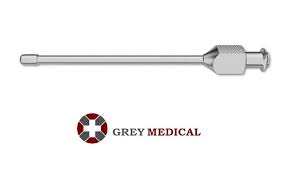Heparin therapy is a cornerstone of anticoagulation treatment in various medical conditions. Administering heparin effectively requires not only knowledge of the drug but also an understanding of the tools used, particularly the needle gauge. This blog will provide a comprehensive guide on the role of heparin needle gauge therapy, discussing its impact on drug delivery, patient comfort, and clinical outcomes.
Heparin: An Overview
Heparin is an anticoagulant medication that helps prevent blood clots. It is commonly administered via subcutaneous or intravenous routes, with the choice of route influencing the gauge of the needle used. Effective heparin therapy is crucial in managing conditions like DVT, pulmonary embolism, and during certain surgical procedures.
The Impact of Needle Gauge on Drug Delivery
- Absorption Rates: The gauge of the needle can influence how quickly heparin is absorbed into the bloodstream. Smaller gauges (like 25G) are often preferred for subcutaneous injections because they allow for a slower and more controlled absorption, reducing the risk of localized reactions.
- Injection Sites: Different gauges may be more suitable for various injection sites. For instance, abdominal fat pads often require finer needles for optimal delivery, while larger volumes given intravascularly may necessitate larger gauges to avoid complications.
- Flow Rates for IV Administration: When heparin is delivered intravenously, larger gauge needles (like 20G or 22G) facilitate faster flow rates, which can be critical in acute care situations where rapid intervention is necessary.
Choosing the Right Gauge for Heparin Injections
- Subcutaneous Injections: For most subcutaneous heparin injections, a 25G needle is ideal due to its balance of comfort and efficacy. It minimizes pain while ensuring that the medication is delivered effectively.
- Intravenous Access: In scenarios requiring intravenous heparin administration, a 20G or 22G needle is more appropriate. These larger gauges allow for quick drug delivery, which is vital in emergencies.
- Patient-Specific Factors: Each patient's unique characteristics, such as body fat percentage, age, and medical history, must be taken into account when selecting a needle gauge. Customizing the choice based on individual needs enhances both comfort and efficacy.
Best Practices for Heparin Needle Gauge Selection
- Adhering to Protocols: Medical professionals should follow established guidelines and protocols regarding needle gauge selection to ensure consistency and safety in heparin administration.
- Monitoring Patient Reactions: After administering heparin, healthcare providers should monitor for any adverse reactions, such as bruising or allergic responses, particularly in relation to the gauge used.
- Education and Communication: Engaging with patients about the importance of needle gauge can help alleviate fears and enhance their understanding of the treatment process. Educated patients are more likely to cooperate and communicate their experiences effectively.
Conclusion
The choice of needle gauge is a fundamental aspect of heparin therapy that directly impacts patient comfort and treatment efficacy. By understanding the relationship between gauge size and drug delivery, healthcare providers can optimize heparin administration for better patient outcomes. As we move forward in refining our medical practices, paying close attention to the tools we use—such as heparin needles—can lead to significant improvements in patient care and safety.





Comments